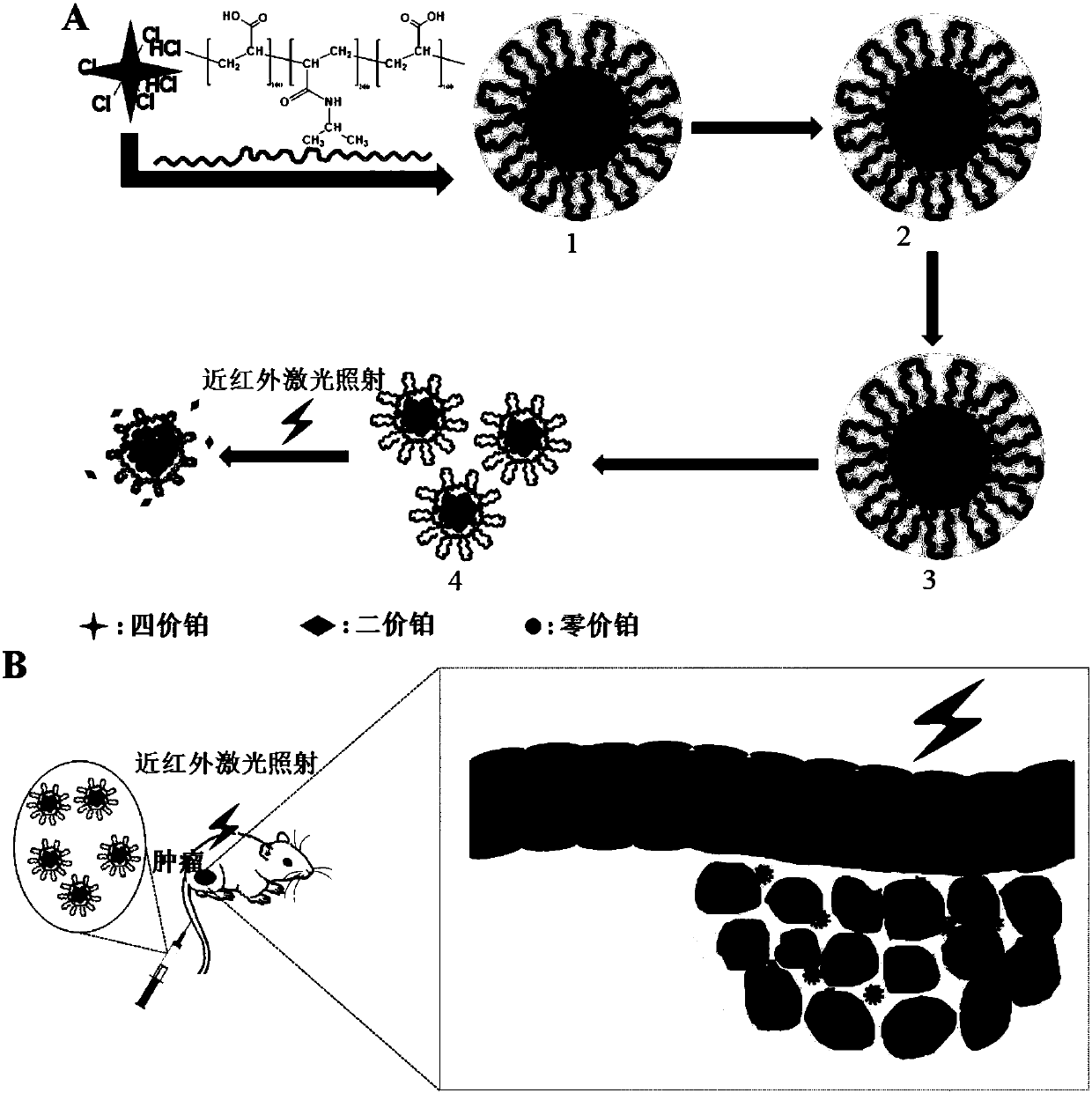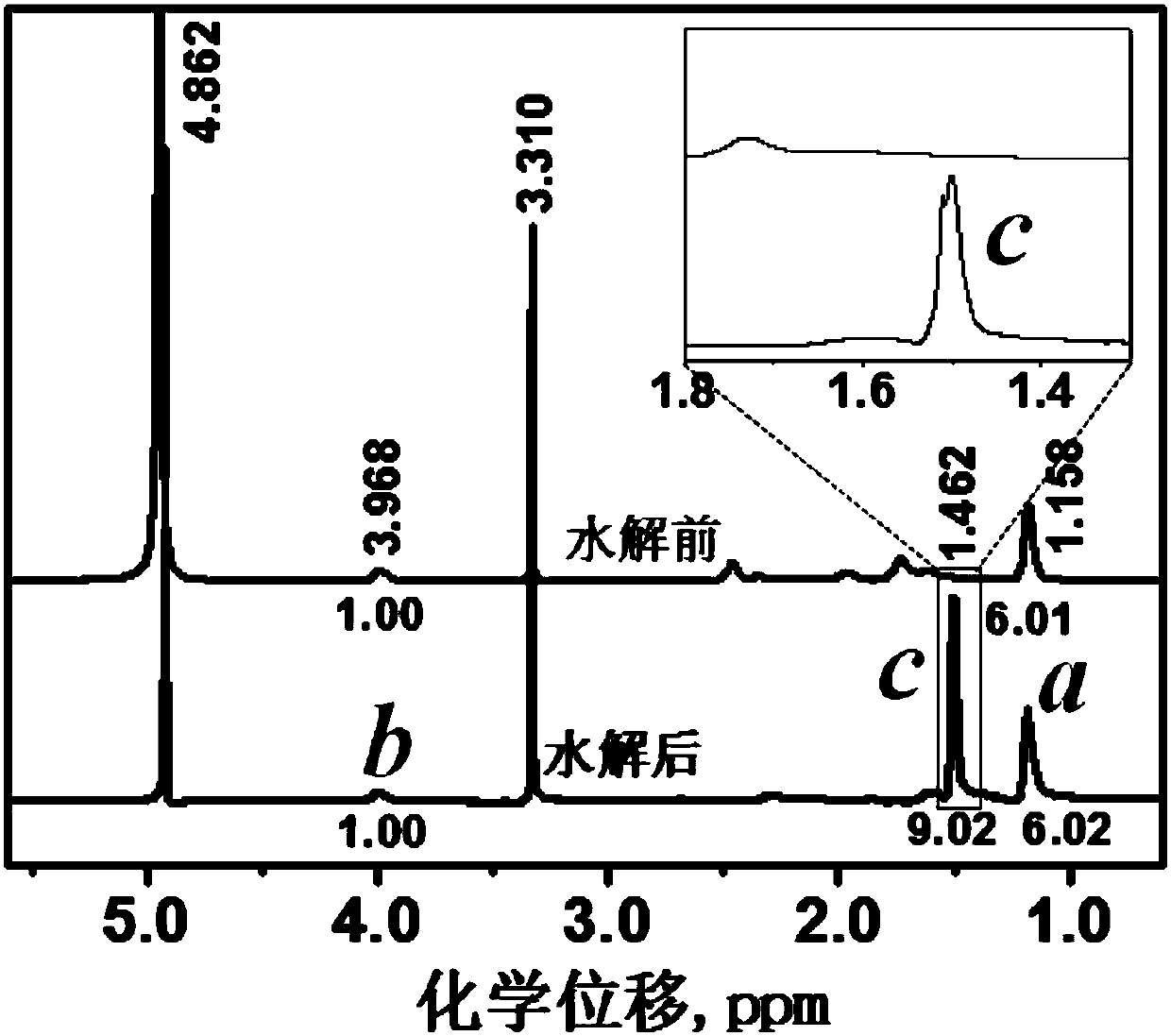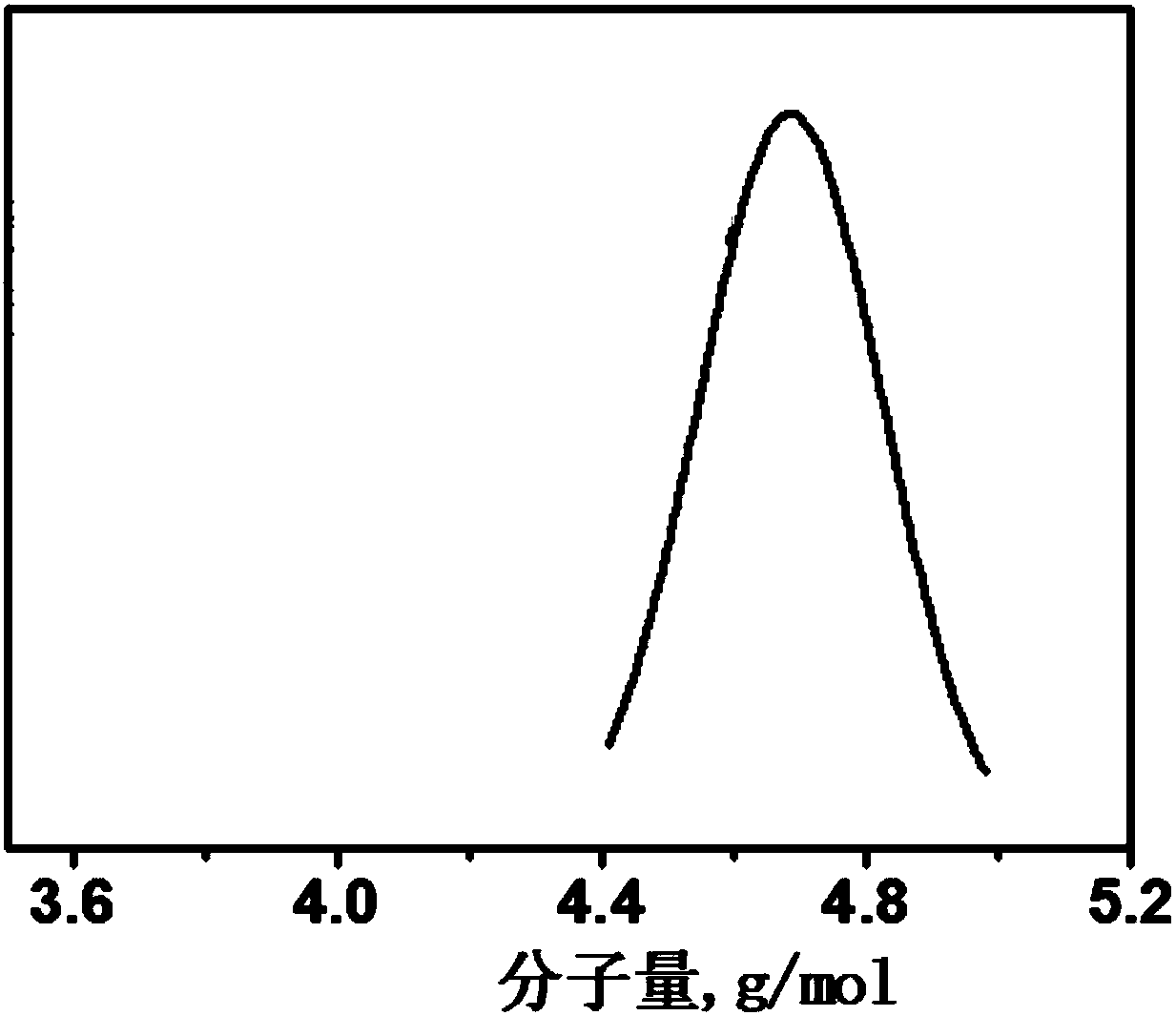Thermosensitive polymer-modified bivalent platinum nanocluster and preparation method and application thereof
A polymer, platinum nanotechnology, applied in the field of anti-tumor drug preparation, to optimize the synergistic anti-tumor effect of photothermal chemotherapy and ensure the effect of adjustable release
- Summary
- Abstract
- Description
- Claims
- Application Information
AI Technical Summary
Problems solved by technology
Method used
Image
Examples
Embodiment 1
[0068] The preparation of embodiment 1 thermosensitive polymer PNA
[0069] In this example, the temperature-sensitive polymer ligand PNA is prepared by atom transfer radical polymerization: N-isopropylacrylamide (NIPAM) is used as the monomer of the temperature-sensitive polymer, and tert-butyl acrylate (tBA) is used as the polymer The monomeric precursor of the ligand, bis[2-(2′-bromoisobutyryloxy)ethyl] disulfide (BiBOEDS) as the initiator, tris(2-dimethylaminoethyl)amine ( Me 6 TREN) is the ligand, cuprous chloride (CuCl) is the catalyst, and the mixed solution of acetone and water four to one is the solvent for the ATRP reaction, NIPAM:tBA:BiBOEDS:Me6TREN:CuCl molar ratio=200:200:1:2 :2.
[0070] Specific steps are as follows:
[0071] 1) Put 2.26g of N-isopropylacrylamide (NIPAM) in the Schlenk reaction vessel tube, then add 8mL of acetone and 2mL of ultrapure water, stir at 1000rpm for 3min to completely dissolve NIPAM, then freeze in liquid nitrogen for 5min, and va...
Embodiment 2-5
[0075] Example 2-5 Preparation of bivalent platinum nanoclusters modified by thermosensitive polymers
[0076] This embodiment provides a bivalent platinum nanocluster modified by a temperature-sensitive polymer. The bivalent platinum nanocluster has a core-shell structure. sensitive polymer PNA.
[0077] The preparation method of the bivalent platinum nanocluster comprises the following steps:
[0078] 1) Weigh 0.5 g of the temperature-sensitive polymer ligand PNA obtained in Example 1, then add it to 10 mL of ultrapure water, stir at 1000 rpm for 3 hours to dissolve it, and adjust the pH to 8.0, according to the ratio in Table 1 below, mix the PNA solution with 1mL of 100mM hexachloroplatinic acid solution and finally adjust the volume to 15mL, adjust the pH to 8.0, put the above system in an oil bath at 30°C and stir at 600rpm Incubated for 12 hours to form nanogels. Transmission electron microscopy of nanogels formed with different feed ratios see Figure 4 A, 4B and 4...
experiment example 1
[0083] Take 500 μL each of the platinum nanoclusters obtained in Comparative Example 1 and Examples 2-4, then dilute to 15 mL with ultrapure water, and drop 5 μL onto a copper grid covered with a carbon film to dry naturally. Using a field emission transmission electron microscope (FTEM, Tecnai G2F30) to observe the morphology of each platinum nanocluster, lattice fringes, electron diffraction rings, and high-angle annular dark field for scanning-transmission electron microscopy (STEM) imaging to observe the outer layer of platinum nanoclusters Thermosensitive polymer ligand PNA and line scan for elemental analysis.
[0084] Figure 6 A shows that the platinum nanoclusters (comparative example 1) synthesized without PNA as a template are agglomerated in the form of chain beads, while Figure 6 B, 6C and 6D have three kinds of platinum nanoclusters (Example 2-4) synthesized with PNA as a template, which are spherical and well dispersed. Such as Figure 7 A, 7B, 7C and 7D sho...
PUM
| Property | Measurement | Unit |
|---|---|---|
| particle size | aaaaa | aaaaa |
| particle size | aaaaa | aaaaa |
| particle diameter | aaaaa | aaaaa |
Abstract
Description
Claims
Application Information
 Login to View More
Login to View More - R&D
- Intellectual Property
- Life Sciences
- Materials
- Tech Scout
- Unparalleled Data Quality
- Higher Quality Content
- 60% Fewer Hallucinations
Browse by: Latest US Patents, China's latest patents, Technical Efficacy Thesaurus, Application Domain, Technology Topic, Popular Technical Reports.
© 2025 PatSnap. All rights reserved.Legal|Privacy policy|Modern Slavery Act Transparency Statement|Sitemap|About US| Contact US: help@patsnap.com



